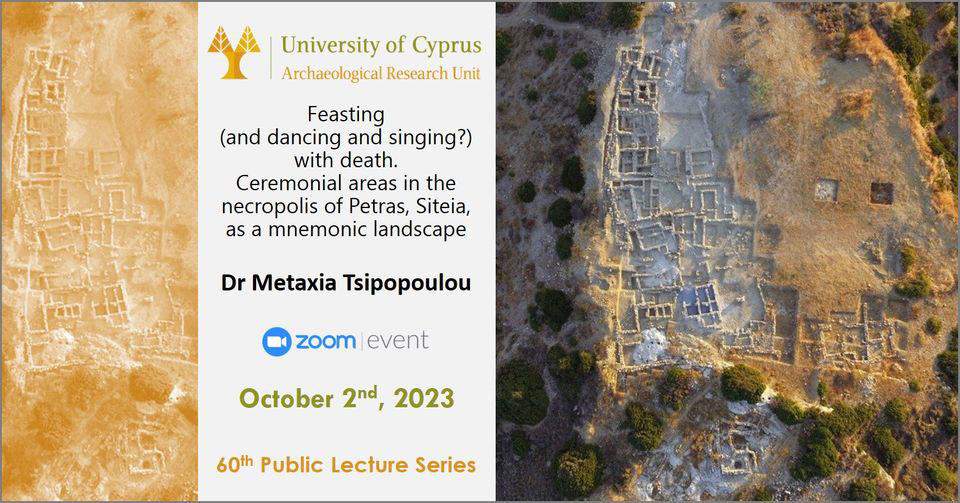Dr Metaxia Tsipopoulou will address the topic “Feasting (and dancing and singing?) with death. Ceremonial areas in the necropolis of Petras, Siteia, as a mnemonic landscape”. The lecture is part of the 60th Public Lecture Series of the Archaeological Research Unit of the University of Cyprus.
Abstract
The monumental complex of Petras, near the modern town of Siteia, in Northeastern Crete, is being investigated under the direction of M. Tsipopoulou since 1985, as a systematic research project of the Hellenic Ministry of Culture. The human presence at Petras started in the Final Neolithic (ca 3500/3400 BCE) and continued uninterrupted to the end of the Bronze Age (ca 1050 BCE). A Minoan Palace, three settlements, and the largest Prepalatial and Protopalatial (2900-1750 BCE) elite, un-plundered cemetery of Crete have been excavated. The title of the lecture is inspired by two very important books dealing with ceremonies in burial places of Minoan Crete, one older, Dancing with Death by Keith Branigan, 1993, and the other more recent by Yannis Hamilakis, Archaeology and the Senses, Human Εxperience, Memory and Affect, 2013. In Middle Minoan IB and Middle Minoan IIA the Petras necropolis was organized spatially with a system of corridors between the house tombs to facilitate circulation, two periboloi as well as two large open areas for ceremonies. In parallel, there was a notable effort towards monumentalization, both in the plan of the tombs, as well in their special architectonic features, with the use of plaster, the construction of external benches and platforms for offerings, and the decoration of the roofs with horns of consecration. The social groups that constructed and used the necropolis related to the palatial administration. Thus, the reference to the “ancestors” and the ceremonies to honor them constituted an important component of the legalization of their social and administrative claims. The house tombs together with the ceremonial areas constitute a memory landscape. The ceremonies were repeated actions, necessary for the preservation of social coherence. The arrangement of the Petras necropolis, the complex plans of the house tombs, and the ceremonial areas, together with the wealth of the grave goods, many of them exotic, suggest a stratified affluent society. Competing social groups of the palatial settlement used the necropolis as a special arena to reinforce their common heritage through the ceremonies, which included ritual consumption of food and drink, and probably also other acts, such as dancing and singing.
